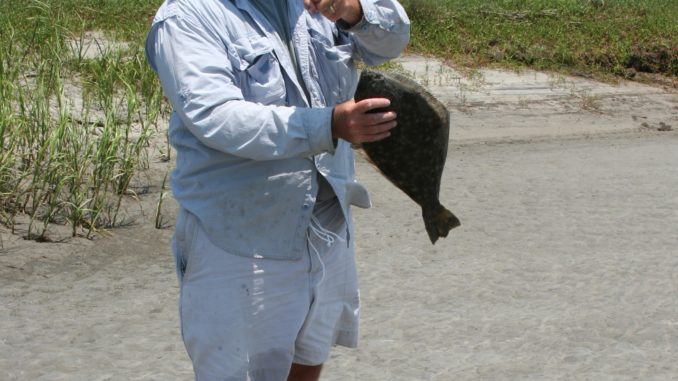
Little tidal creeks can hold big flatties
It’s tough to pick a fish species that won’t bite in South Carolina’s Lowcountry waters this month, and flounder are no exception. One of the most-consistent ways of catching flatfish is by stranding yourself at low tide and fishing shallow, isolated pockets of water that turn into ponds between tide cycles.
Turtle Creek in the Fripp Island area is one such pocket of water, but it’s not difficult to find other similar areas, especially around Beaufort and Port Royal sounds. Most of these creeks have incoming water from the surf on the beach side and from calmer inlets on their back side. At high tide, they act as passageways for fish moving in between the ocean and bays, and at low tide, they provide those same fish with warm, calm and shallow water to rest and eat the buffet of baitfish that stay behind.
Morgan Watt of St. Helena Island said anglers choosing to wade these small creeks can find themselves surrounded by flounder once the tide goes out. Watt ties a bucket of baitfish to his belt and casts to every tiny spot in the creek, trying his best not to take any steps — which can result in spooking flounder.
“They can be in just a few inches of water, so even if you’ve just got your feet covered, you can step on them when you move at all. But wading allows you to cast in all directions (and) cover every inch of water in these creeks without moving at low tide,” he said.
Watt said there’s no big secret to catching flounder once the tide goes out. He uses a Carolina rig with just enough weight to keep his bait on the bottom, and he slowly works the bait back. Once he feels a bite, he makes sure to give the flounder enough time to get the bait in its mouth before setting the hook.
Anglers can also cast parallel to the bank, engage their reels, then slowly walk along the edge of the water without reeling at all, essentially trolling their bait, allowing them to work more water with each cast. When they feel that thump of a flounder bite, it’s time for them to get ready to set the hook.


Be the first to comment